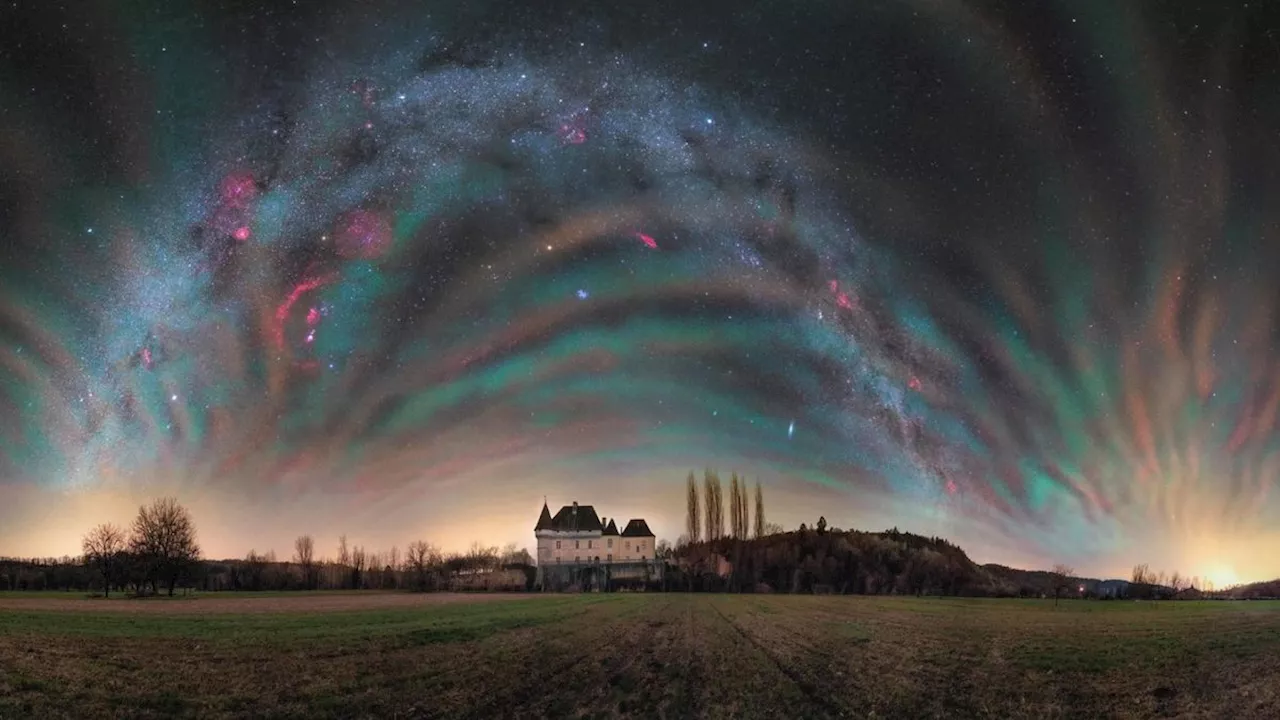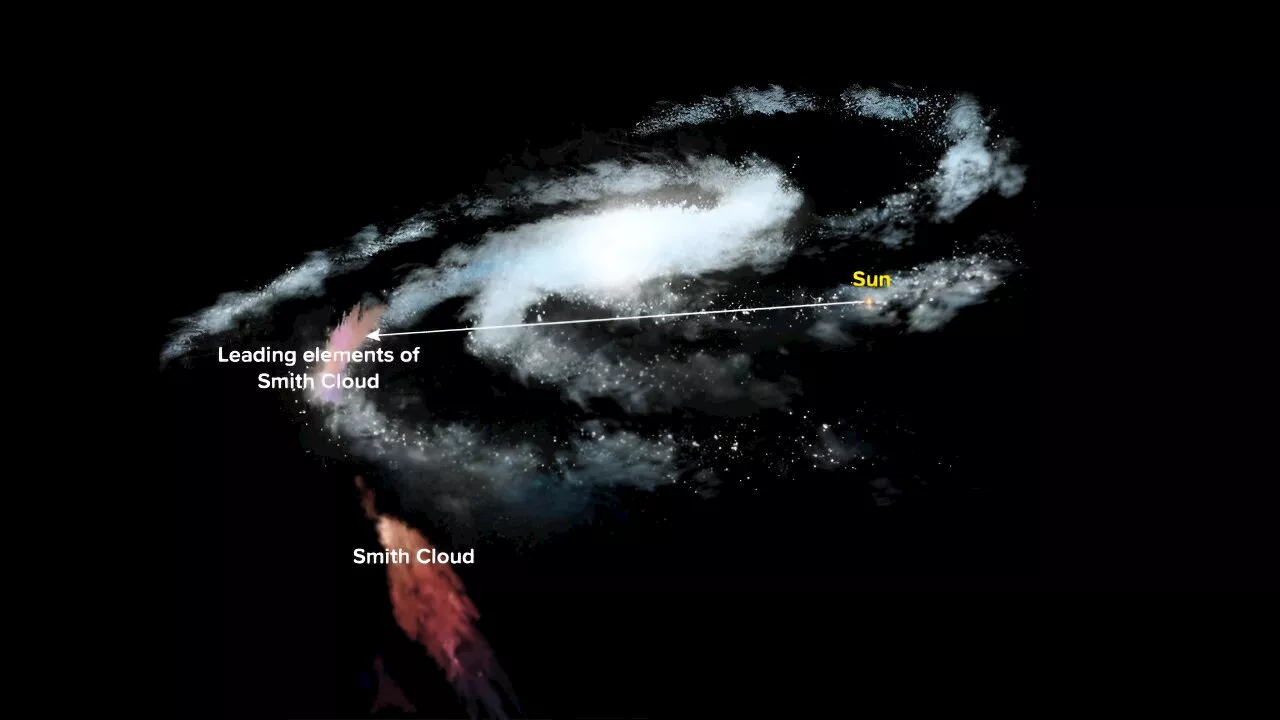Space may appear vast and empty, but it's full of cosmological objects that are invisible to the human eye. From our vantage point on Earth, many of these objects fall between astronomers and what they hope to observe, impacting what they find. This scenario was recently encountered by scientists at the U.S.
While aiming for massive gas cloud, astronomers spot differences in thickness of Milky Way Galaxy retrieved 12 June 2024 from https://phys.org/news/2024-06-aiming-massive-gas-cloud-astronomers.html
This document is subject to copyright. Apart from any fair dealing for the purpose of private study or research, no part may be reproduced without the written permission. The content is provided for information purposes only.Use this form if you have come across a typo, inaccuracy or would like to send an edit request for the content on this page. For general inquiries, please use ourThank you for taking time to provide your feedback to the editors.
Your feedback is important to us. However, we do not guarantee individual replies due to the high volume of messages.to let the recipient know who sent the email. Neither your address nor the recipient's address will be used for any other purpose. The information you enter will appear in your e-mail message and is not retained by Phys.org in any form.Get weekly and/or daily updates delivered to your inbox.
Physics News Science News Technology News Physics Materials Nanotech Technology Science
United States Latest News, United States Headlines
Similar News:You can also read news stories similar to this one that we have collected from other news sources.
 Researchers upend theory about the formation of the Milky Way GalaxyResearch reveals a shocking discovery about the history of our universe: the Milky Way Galaxy's last major collision occurred billions of years later than previously thought.
Researchers upend theory about the formation of the Milky Way GalaxyResearch reveals a shocking discovery about the history of our universe: the Milky Way Galaxy's last major collision occurred billions of years later than previously thought.
Read more »
 Our dazzling galaxy shines in Milky Way Photographer of the Year images'A glimpse into the vastness beyond.'
Our dazzling galaxy shines in Milky Way Photographer of the Year images'A glimpse into the vastness beyond.'
Read more »
 How did a satellite galaxy of the Milky Way come to be?Crater 2, located approximately 380,000 light years from Earth, is one of the largest satellite galaxies of the Milky Way. Extremely cold and with slow-moving stars, Crater 2 has low surface brightness. How this galaxy originated remains unclear. A team of physicists now offers an explanation.
How did a satellite galaxy of the Milky Way come to be?Crater 2, located approximately 380,000 light years from Earth, is one of the largest satellite galaxies of the Milky Way. Extremely cold and with slow-moving stars, Crater 2 has low surface brightness. How this galaxy originated remains unclear. A team of physicists now offers an explanation.
Read more »
 10 'breathtaking' photos of our galaxy from the 2024 Milky Way Photographer of the Year contestElise studied marine biology at the University of Portsmouth in the U.K. She has worked as a freelance journalist focusing on the aquatic realm. Elise is working with Live Science through Future Academy, a program to train future journalists on best practices in the field.
10 'breathtaking' photos of our galaxy from the 2024 Milky Way Photographer of the Year contestElise studied marine biology at the University of Portsmouth in the U.K. She has worked as a freelance journalist focusing on the aquatic realm. Elise is working with Live Science through Future Academy, a program to train future journalists on best practices in the field.
Read more »
 Galaxy Z Fold 6 now rumored to have better cameras than Galaxy S24Anam Hamid is a computer scientist turned tech journalist who has a keen interest in the tech world, with a particular focus on smartphones and tablets. She has previously written for Android Headlines and has also been a ghostwriter for several tech and car publications.
Galaxy Z Fold 6 now rumored to have better cameras than Galaxy S24Anam Hamid is a computer scientist turned tech journalist who has a keen interest in the tech world, with a particular focus on smartphones and tablets. She has previously written for Android Headlines and has also been a ghostwriter for several tech and car publications.
Read more »
 These are the key specs of the upcoming Samsung Galaxy Watch 7 and Galaxy Watch UltraAdrian, a mobile technology enthusiast since the Nokia 3310 era, has been a dynamic presence in the tech journalism field, contributing to Android Authority, Digital Trends, and Pocketnow before joining PhoneArena in 2018. His expertise spans across various platforms, with a particular fondness for the diversity of the Android ecosystem.
These are the key specs of the upcoming Samsung Galaxy Watch 7 and Galaxy Watch UltraAdrian, a mobile technology enthusiast since the Nokia 3310 era, has been a dynamic presence in the tech journalism field, contributing to Android Authority, Digital Trends, and Pocketnow before joining PhoneArena in 2018. His expertise spans across various platforms, with a particular fondness for the diversity of the Android ecosystem.
Read more »
